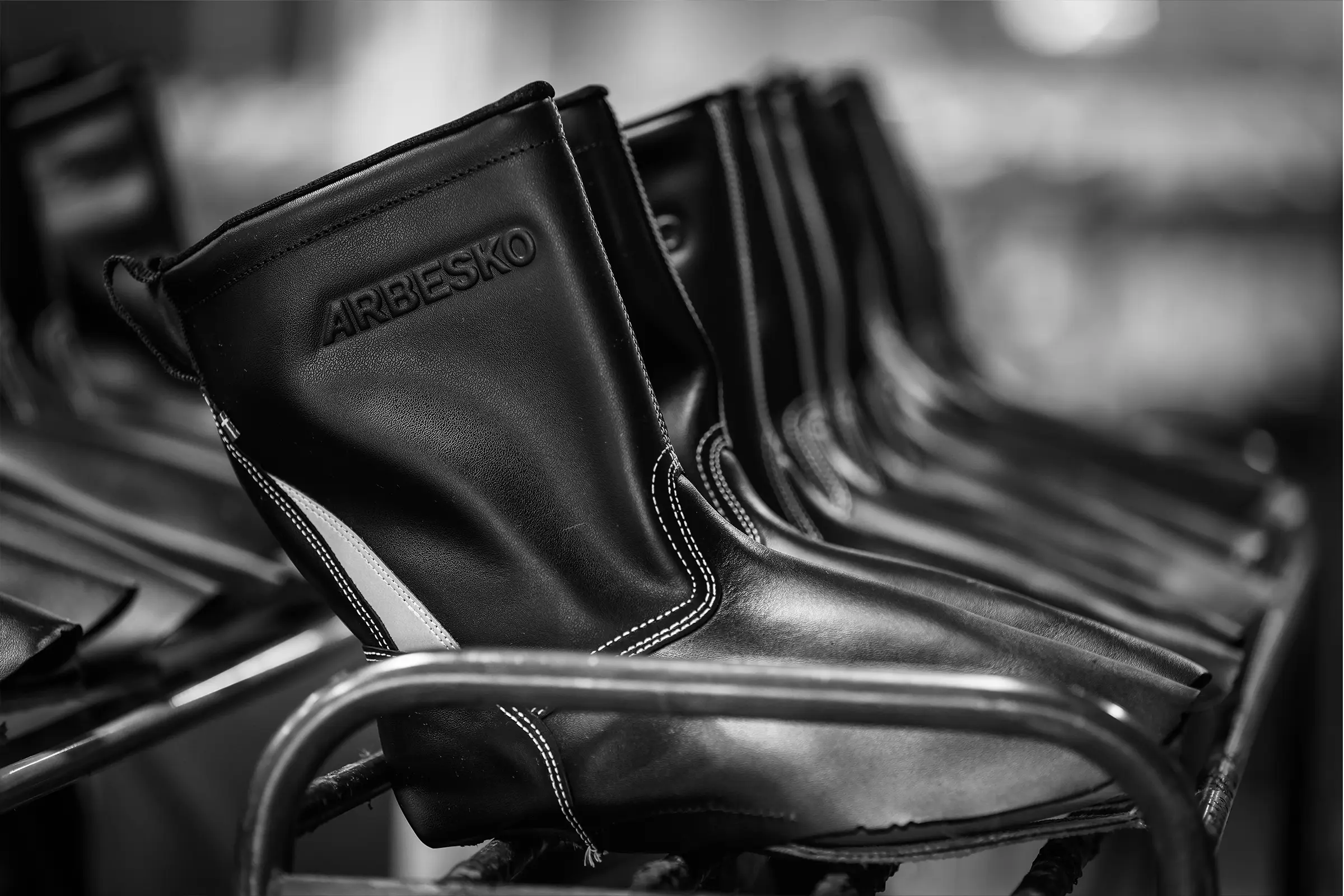Sustainability at Oksebra do Brasil
The upper parts of our shoes are manufactured in Brazil by our subsidiary Oksebra do Brasil, which we have owned since 1995. It is our largest subcontractor and we see it as a great asset that we own this part of the supply chain. It enables us to set high standards for environmental and sustainability issues.
Since 2021, Oksebra do Brasil has also been operated in accordance with international standards for production, environmental and occupational safety requirements (ISO 9001, ISO 14001 and ISO 45001), and there is ongoing work on sustainability-related issues, such as efforts to reduce energy consumption, material utilization, recycling, work environment and gender equality.
In addition to daily contact, Oksebra do Brasil and Arbesko visit each other regularly to learn and have insight into each other's activities and together we visit adjacent suppliers.
Towards a completely fossil-free shoe production chain
Starting in 2024, Brazilian companies the size of Oksebra do Brasil will be able to sign completely fossil-free electricity contracts. Since the subcontractor we hire for some sewing already operates its factory with energy from solar panels, this means that from next year we will operate the entire final production of our shoes fossil-free.
The electricity bought in today to Oksebra do Brasil has the usual Brazilian land mix, which in a typical year consists of 80% renewable energy from water, solar and wind power.
As in our Swedish production, there are targets for Oksebra do Brasil to reduce energy use in production.

Waste
Our entire organization attaches great importance to waste minimization, so does Oksebra do Brasil.
- 100% of all waste generated at Oksebra do Brasil is sorted and disposed of in recycling or energy extraction processes, which means that no waste ends up in landfill.
- 95% of all faults detected in production are reworked rather than discarded. Of the 5% that cannot be reworked, all flawless parts are taken care of and used in new models.
- The amount of leather and textile spills has decreased. Through more efficient use of materials and fewer textile variants, we have been able to reduce waste by 15% from these two material categories in recent years

Circular reuse of leather spills
Since 2009, all leather spills that have arisen at Oksebra do Brasil have been sent to a factory that extracts fertilizers for organic cultivation. We see it as a contribution towards a circular society because our waste material can come into use again instead of being deposited or incinerated.
The process takes place in large pressure cookers with controlled temperatures. 1 kg of nitrogen produced in this way uses 50% less energy than is required to produce 1 kg of manure. The product also does not contribute to eutrophication or seepage to groundwater because the nitrogen contained in it comes out into the ground through a slow process, so that what is grown can absorb the entire amount.




